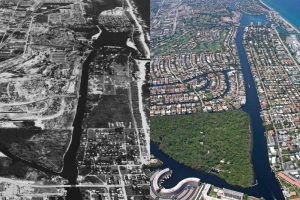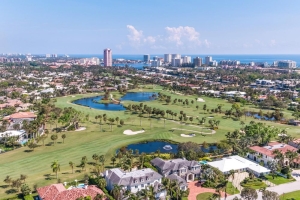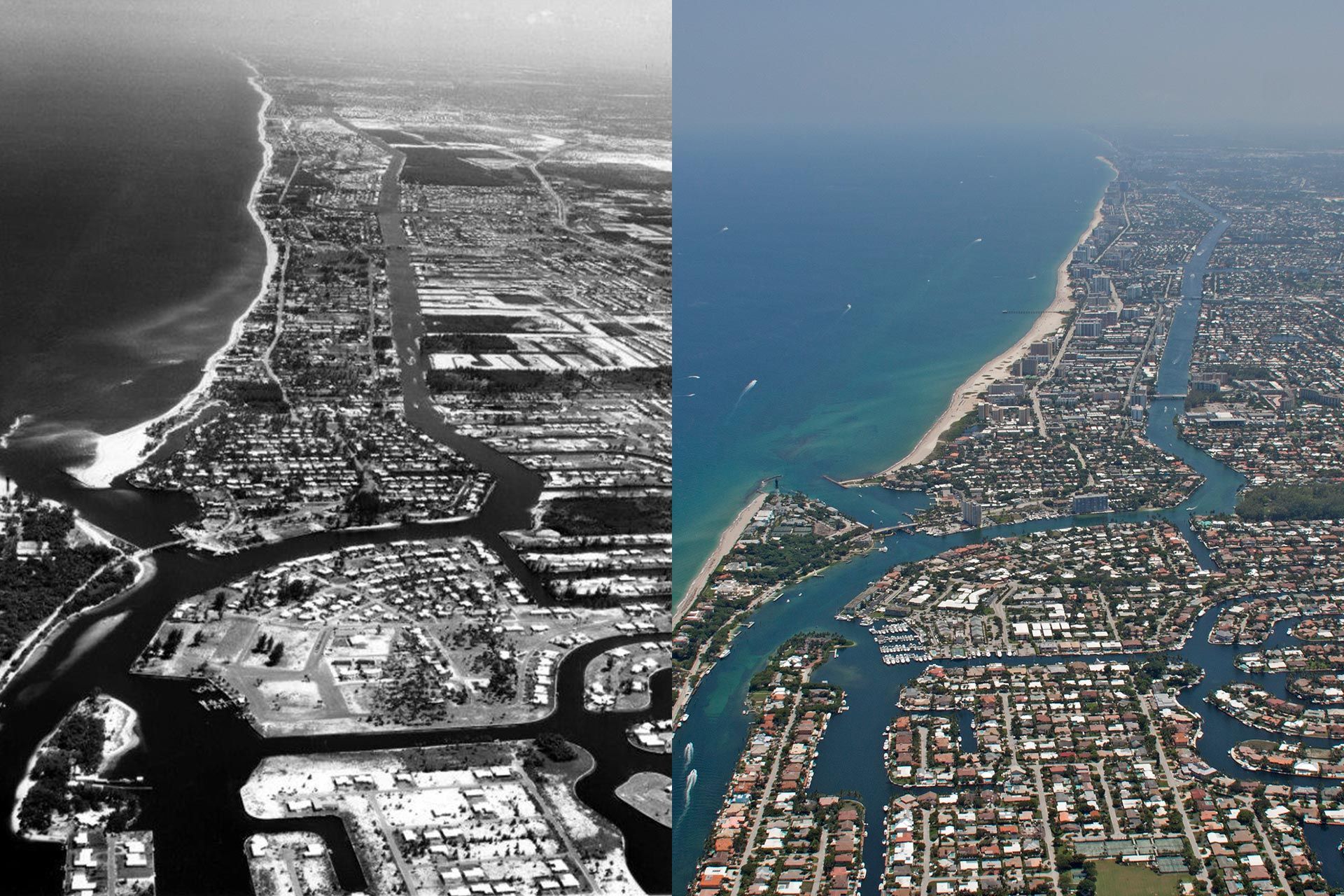Discover the deep roots of Boca Raton’s history
Boca Raton is the second largest city in the prestigious Palm Beaches. What most people do not realize is that it is the architectural heart of the Palm Beach dream that began with one visionary designer. Boca Raton has a rich history, whether you consider its founding as an agricultural community in the early 1900s, its boom in the mid-1920s, or the ancient Glades culture that occupied the area long before.
When people see the Old Florida beauty of Boca Raton combined with the soaring modern developments, they can’t help but imagine the grand history that must have built this place. If you are considering joining the Boca Raton community, learning about its rich heritage and history is a rewarding place to start. After all, you’re about to become a part of that living history.
The history behind Boca Raton
Boca Raton’s evolution is deeply intertwined with the region’s rich history, where the indigenous Glades culture thrived long before European contact. As settlers arrived, the area became known for its pineapple plantations and Japanese farming colonies, laying the groundwork for its agricultural roots. Over time, Boca Raton transformed, blending its historical heritage with modern developments, ultimately emerging as a premier destination known for its upscale resorts, pristine beaches, and vibrant cultural scene.
The Glades’ original inhabitants
The native people of the Glades culture occupied the Florida beaches and wetlands from 500 BC to shortly after the arrival of European settlers. However, their population was quickly depleted due to illnesses brought from overseas. The Glades people are known for their intricate pottery, and eras of their civilization can be identified by the pottery they left behind. The people of the Everglades were nomadic with a thriving trade network. During the end of their final era, there was evidence of trading many exotic resources and finely crafted tools and decorations.

Where Boca Raton got its name
The history of Boca Raton as we know it begins with ocean coves. You may already know that Boca means “mouth” and Raton means “mouse.” The name originally noted a small “mouth” or cove along the coast, earning the name “mouse” by either the size or the shape of nearby rocks. However, the location on the map has since shifted from the original cove to Lake Boca Raton, which rarely (but sometimes) connects to the sea.
The earliest settlers of Boca Raton
The earliest settlers of Boca Raton formed a small agricultural community on the freshwater lake. The primary crop of choice was pineapples, one of the many tropical fruits that grow best in Florida’s hot and moist climate. A surprising fellow community soon joined these settlers, the Yamato colony from Japan. Signs of the Yamato village are still evident in Boca Raton today.
Mizner and the Cloister Hotel
Boca Raton existed peacefully for many years until the Florida land boom when an aspiring architect named Addison Mizner (1872 – 1933) set his sights on building the ideal luxury community along Palm Beach. Mizner’s architectural career was already illustrious, as he had made a name for himself building luxurious country houses on Long Island. When Mizner came to Florida, he began building mansions on Palm Beach and redefined summer homes for the rich and powerful of the West Coast in the 1920s.
The Florida land boom
The Florida land boom occurred during this time, and Florida’s population swelled. With an eye toward the future, Mizner dove in and bought vast tracts of land along Palm Beach to develop and sell to his wealthy social circle.
Mizner’s vision for Boca Raton
When Mizner bought his land in 1925, he envisioned the perfect high-society community. He dreamed of a grand hotel, beautiful walking avenues along the lakeside, and mansion-lined golf courses. Mizner is widely responsible for the lifestyle and architectural styles of Florida’s luxury housing market today. Mizner dreamed of endless luxury and convenience through the thoughtful design of both indoor and outdoor spaces.
Mizner saw many of his designs for Boca Raton put into place, even though he only lived eight years after buying the land. Many iconic and historic buildings around the town have preserved and restored elements based on Mizner’s design. There is still a park named after him.
The historic Cloister Hotel
The Cloister Hotel is the most important place regarding Boca Raton’s founding. A notoriously beautiful structure, The Cloister is one of Mizner’s greatest masterpieces, and it introduced Mediterranean-style architecture to the foundations of Old Florida style. The Cloister’s location on Boca Raton beach was actually his second choice, but Ritz-Carlton bought his first hotel on the Palm Beach shore and changed the design.
Historical landmarks and sites
Boca Raton is rich in history and historic sites. Throughout the lake and the county, you will find landmarks honoring times gone by.
Overview of Important Historical Landmarks
If you’re looking for landmarks where you can feel the history of Boca Raton, look only as far as Old City Hall or the Old Floresta Historic District, where Mizner built some of the first custom homes. Take the historic tour of The Cloister Hotel or look for architectural award-winning homes like The Lavender House.
Boca Raton’s must-see museums and art galleries
Boca Raton has many beautiful museums and art galleries to visit, where you can learn more about the history of this small town. To better appreciate the art and history of Boca Raton, you might explore the Morikami Japanese Museum Gardens, the Boca Raton Museum of Art, the Schmidt Boca Raton History Museum, or the FAU University Galleries.

Archaeological sites and discoveries
The land where Boca Raton was built is known for archaeological signs of the Glades cultures in their first, second, and third developmental eras. Prehistoric remnants, such as the famed pottery shards, have complicated building plans around the lake where the previous nomadic peoples once gathered.
Discover for yourself the rich history of Boca Raton
Boca Raton has been part of an ancient nomadic civilization, a pineapple farming community, an early Japanese settlement, and its current illustrious state from the vision of a single-inspired architect. In many ways, Boca Raton is at the heart of Palm Beach’s luxury designs and Old Florida style. You can discover Boca Raton’s rich history and heritage through the many museums and well-preserved historic buildings that define this iconic lakeside region.
If you are planning to move to Boca Raton, look for an experienced real estate agent deeply familiar with this beautiful city’s unique history and neighborhoods. Royal Palm Properties can help you find the perfect new abode among historic homes and modern luxuries. Become a part of Boca Raton’s living history as a homeowner and resident.


